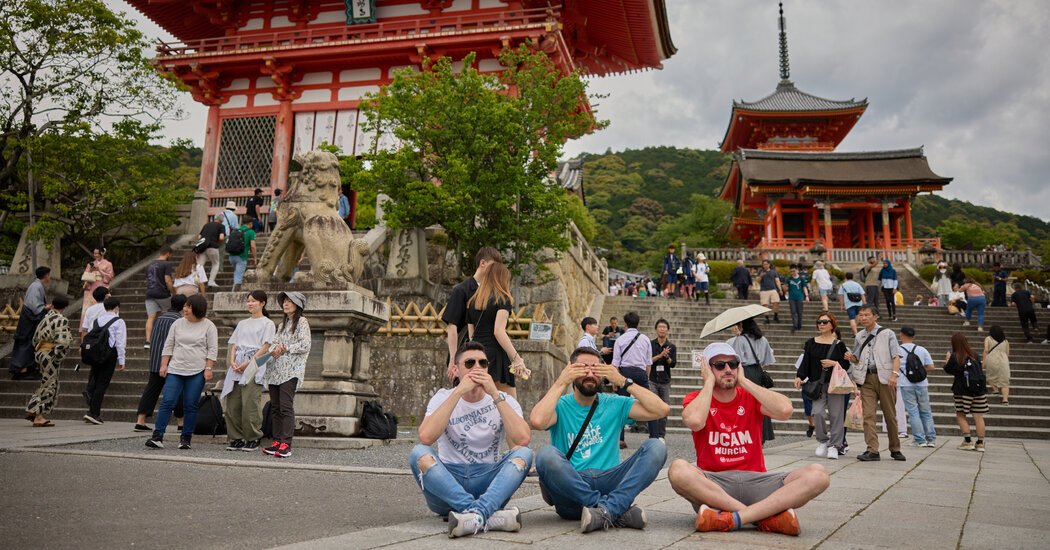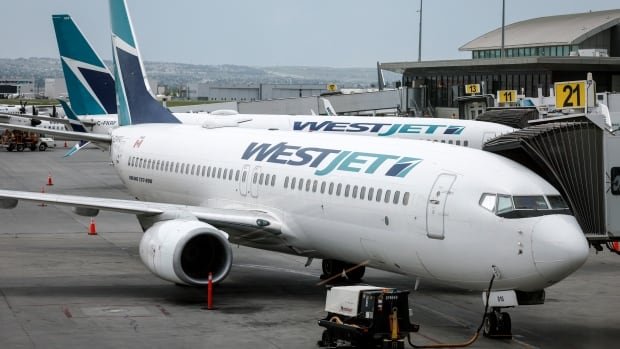On two recent occasions, a foreign tourist walked into Shoji Matsumoto’s barbershop, through a front door that grates loudly when opened more than halfway, wanting a haircut.
One was Italian, the other British. Mr. Matsumoto, who is 75 and speaks neither of their languages, didn’t know what to tell them. He picked up his scissors and began to cut, hoping that his decades of experience would carry him through the stilted encounters.
Tourists, propelled in part by a weak yen that makes their money go further in Japan, have been pouring into the country ever since it eased its coronavirus-related entry restrictions in 2022. Some officials, including Prime Minister Fumio Kishida, have raised concerns about overtourism. In March, there were more than three million international arrivals, a monthly record, and a more than 10 percent jump compared with March 2019.
Nearly two thirds of international visitors tend to be from South Korea, Taiwan and China. Last year, spending from foreign tourists made up about 9 percent of Japan’s gross domestic product.

Popular sites in cities like Kyoto, Japan’s ancient royal capital, feel increasingly unmanageable. Visitors are spilling into previously untouristed places, like small towns near Mount Fuji or the commercial district of Kyoto where Mr. Matsumoto cuts hair.
“Before, it was normal to see tourists in certain spots,” Mr. Matsumoto said from a low chair in his barbershop on a recent Saturday. “But now, they’re spreading out to random and unexpected places.”
That influx is testing the patience of a generally polite society.
In Kyoto and other heavily visited cities, some residents grumble about being priced out of hotel rooms or crowded out of buses and restaurants. Others say that tourists sometimes disrespect local customs by, say, chasing after geishas to photograph them or eating while walking, a behavior that is considered rude in Japan.
One day last month, it took Hiroshi Ban six hours — twice as long as usual — to visit Kyoto’s Heian Jingu shrine. Mr. Ban, 65, attributed the delaypartly to tourists who hold up buses by counting out coins for the fare.
“Every day feels like a carnival here,” said Mr. Ban, an event organizer. “We can’t enjoy our daily lives in peace.”
Even those who directly benefit from tourism revenue worry that it might be unsustainable.
Hisashi Kobayashi, a taxi driver in Kyoto, said business was so good that taking a day off felt like passing up easy money. But many tourism-related industries were struggling to keep up with demand as they recovered from pandemic-era labor shortages, he said.
“When Japanese people come here, they feel they’re in a foreign land because there are so many tourists,” Mr. Kobayashi, 56, added as his taxi approached a bottleneck near a popular temple. “It’s not Kyoto anymore.”
Some rural locations are feeling the strain for the first time. One is Fuji City, about 200 miles by road east of Kyoto in Shizuoka Prefecture.
After a bridge with a direct view of Mount Fuji started to become popular on social media late last year, Shizuoka’s tourism department said on Instagram that it was a good spot for “beautiful, dreamlike pictures.” Left unsaid was that the bridge sat in a residential area with no visitor parking spaces, public toilets or garbage cans.
Many visitors littered, parked in driveways and in some cases dodged traffic to take photos from the bridge’s median strip, residents said in interviews.
Over a public holiday last month, about 300 tourists arrived daily for four days, standing in a line for photos that coiled down the street, said Mitsuo Kato, 86, who lives by the bridge.
“They just park here,” Mr. Kato said outside his home on a recent Sunday, as groups of tourists from South Korea diligently took photos of clouds that were obscuring Mount Fuji. “So we had to put up signs.”
Officials across Japan have been responding to the tourism surge with varying degrees of efficacy.
In Fuji City, the authorities erected a makeshift six-car parking lot and started to build a larger one that would fit 15 cars and include a bathroom, said Motohiro Sano, a local tourism official.
In a neighboring prefecture, Yamanashi, officials in the town of Fujikawaguchiko put up a billboard-size screen last month to deter tourists from photographing a Lawson’s convenience store whose blue awning sits beneath the mountain and became a staple of social media posts. The screen is now dotted with holes large enough to fit a phone camera lens, the local news media reported.
In Shibuya, a heavily visited area of Tokyo, officials announced plans to ban drinking alcohol outdoors at night in an attempt to curb bad behavior by young people and tourists.
And in Kyoto, where signs in train stations ask visitors to “mind your manners,” the government began running special buses for tourists this month.
At the city’s Nishiki market, where some residents have complained of finding grease stains on their clothing after squeezing through throngs of snacking tourists, Yoshino Yamaoka gestured to two signs hanging outside her barbecue eel restaurant.
Both said in English, “No eating while walking.” One had a larger font, and its text was underlined in red.
“People weren’t following it, so I put up this one with a stricter tone,” Ms. Yamaoka, 63, said of the bolder sign. But she wondered whether her new approach was too strict.
“Business depends on the tourists,” she said.
To beat the crowds on a recent weekend, some tourists visited popular Kyoto sites at sunrise or waited 40 minutes to eat at a popular ramen joint at 11 p.m. A few complained about the congestion they had helped to create.
“It’s a disaster,” said Paul Oostveen, 70, a tourist from the Netherlands, after leaving the Kiyomizu-dera Temple, a popular attraction.
From his empty barbershop, Mr. Matsumoto said that he had successfully cut the hair of his two foreign clients and that he wouldn’t turn away others who stumbled through his door.
But he worried about providing good quality service to customers he couldn’t understand, he said, and would prefer that non-Japanese speakers go elsewhere.
Even though tourism is good for the nation, he added over the drone of a radio, “There’s a part of me that’s not fully content.”










